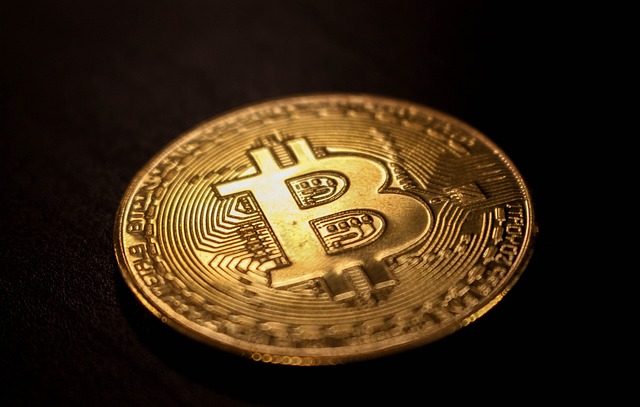DeFi and Crypto Banking: The Future of Financial Services
DeFi and Crypto Banking: The Future of Financial Services

Decentralized Finance and the Evolution of Traditional Banking
Traditional banking has long been the cornerstone of the financial sector, providing essential services such as lending, borrowing, and safeguarding assets. However, the emergence of decentralized finance (DeFi) is set to disrupt this age-old system by introducing a peer-to-peer, blockchain-based approach to financial services. With DeFi, individuals can directly interact with smart contracts and decentralized applications, bypassing traditional intermediaries like banks. This decentralization not only promotes greater financial inclusion but also eliminates the need for costly intermediaries, making transactions faster and more cost-effective.
One of the key advantages of DeFi is the potential it holds for financial innovation. Traditional banking systems have often been criticized for their lack of agility and resistance to change. DeFi, on the other hand, can rapidly adopt new technologies and adapt to evolving customer needs. By leveraging blockchain technology, DeFi platforms eliminate the need for manual paperwork and time-consuming verifications, enabling seamless and efficient financial transactions. This innovation has the potential to revolutionize the way individuals access financial services, opening up a world of possibilities for the unbanked and underbanked populations. However, as with any technological advancement, there are risks and challenges that need to be addressed to ensure the sustainable growth and adoption of DeFi in the future.
The Rise of Digital Assets and their Impact on Banking Services
Digital assets, such as cryptocurrencies and tokenized assets, have rapidly gained popularity in recent years, ushering in a new era of financial transactions. As these digital assets continue to evolve and become more widely accepted, their impact on banking services is becoming increasingly significant. Traditional banking institutions are now faced with the challenge of adapting to this emerging trend to stay relevant in a rapidly changing financial landscape.
One key impact of digital assets on banking services is the potential for immediate and low-cost cross-border transactions. Unlike traditional banking systems that often involve multiple intermediaries and lengthy processing times, digital assets enable near-instantaneous transfers of value across borders. This can greatly enhance the efficiency and convenience of international remittances, making it easier for individuals and businesses to send and receive funds globally. Additionally, the lower transaction costs associated with digital assets can lead to reduced fees for consumers, making banking services more affordable and inclusive for a wider range of individuals.
Leveraging Blockchain Technology to Transform Financial Services
Blockchain technology has emerged as a disruptive force, poised to redefine the financial services industry. Its decentralized and immutable nature allows for secure and transparent transactions without the need for intermediaries. This transformative technology has the potential to revolutionize various aspects of financial services, from payments to lending and beyond.
One of the key advantages of blockchain technology lies in its ability to enhance transparency in financial transactions. With a distributed ledger system, all participants in the network can have real-time access to transaction data, eliminating the need for manual reconciliation and reducing the risk of fraud and error. This enhanced transparency not only benefits financial institutions by streamlining their operations, but also empowers individuals and businesses by providing them with a clear view of their financial activities. As a result, blockchain technology holds the promise of greater trust and accountability in the financial services industry.
Exploring the Benefits of Decentralized Lending and Borrowing
In the world of decentralized finance (DeFi), lending and borrowing have gained significant attention and popularity.

Additionally, decentralized lending and borrowing platforms often offer lower interest rates compared to traditional banking institutions. This affordability is made possible by the removal of overhead costs and the automation of the lending process through smart contracts. With smart contracts, borrowers and lenders can negotiate and agree upon terms that are embedded within the blockchain, effectively eliminating the need for complex paperwork and potential disputes. As a result, decentralized lending and borrowing provide an opportunity for individuals to access funding at competitive rates while streamlining the overall borrowing experience.
The Role of Smart Contracts in Revolutionizing Financial Transactions
Smart contracts have emerged as a backbone for revolutionizing financial transactions in the digital age. These self-executing contracts, running on blockchain technology, are designed to automatically enforce the terms of an agreement without the need for intermediaries. By eliminating the need for middlemen, such as banks or lawyers, smart contracts enable a more efficient, transparent, and secure system of financial transactions.
One of the key advantages of smart contracts is their ability to eliminate the possibility of human error or fraud. Since smart contracts are coded to execute automatically based on predefined conditions, there is no room for manipulation or tampering. This not only streamlines the process but also eliminates the need for trust between parties. As a result, financial transactions become more reliable, reducing the risk of disputes and fostering a greater sense of trust among individuals and businesses. Additionally, the use of smart contracts can significantly reduce costs associated with traditional financial transactions, as there is no need to pay intermediaries for their services.
Unlocking Financial Inclusion through Decentralized Banking Solutions
Financial inclusion has always been a key focus for the banking industry. However, traditional banking systems have often struggled to reach the unbanked and underserved populations, leaving them excluded from essential financial services. This is where decentralized banking solutions come into play. By leveraging blockchain technology, decentralized finance (DeFi) platforms have the potential to bridge the gap and unlock financial inclusion for millions of people worldwide.
One of the main advantages of decentralized banking solutions is their accessibility. Unlike traditional banks, which often require individuals to meet various eligibility criteria and provide extensive documentation, DeFi platforms offer open access to anyone with an internet connection and a compatible device. This inclusivity allows individuals who are unable to access traditional banking services, such as those in remote areas or without proper identification, to participate in the financial ecosystem. By removing the need for intermediaries and relying on smart contracts, decentralized banking solutions facilitate peer-to-peer transactions, which can be executed seamlessly and securely. This not only eliminates the need for a physical bank branch or middleman but also reduces costs, making financial services more affordable and accessible to all.
Understanding the Risks and Challenges in DeFi and Crypto Banking
Decentralized Finance (DeFi) and crypto banking offer promising opportunities for individuals to have greater control over their financial assets and participate in a permissionless and inclusive ecosystem. However, it is crucial to understand the risks and challenges associated with these emerging technologies.
One of the primary risks in DeFi and crypto banking is the volatility of digital assets. Cryptocurrencies like Bitcoin and Ethereum are known for their price fluctuations, which can result in significant gains or losses for individuals. This volatility poses a challenge for users who may face difficulties in accurately predicting the value of their holdings.
Additionally, the decentralized nature of these systems can expose individuals to various security risks. While blockchain technology provides robust security measures, the potential for hacking, scams, and phishing attacks still exists. As users often have full control over their assets in DeFi and crypto banking, any compromise in their private keys or wallets can lead to irreversible financial losses. It is crucial for individuals to be knowledgeable about best security practices and to exercise caution when transacting in these decentralized systems.
The Emergence of Stablecoins and their Role in Financial Stability
Stablecoins have rapidly emerged as a key player in the world of digital assets, offering a stable, reliable value that can be utilized in financial transactions. Unlike their volatile counterparts such as Bitcoin and Ethereum, stablecoins are pegged to traditional assets like fiat currencies or commodities. This stability makes them a preferred choice for individuals and businesses seeking to transact using cryptocurrencies without the fear of price fluctuations.
One of the primary roles of stablecoins is to enhance financial stability. With their consistent value, stablecoins provide a reliable medium of exchange and store of value, without the inherent risks associated with traditional cryptocurrencies. They enable users to mitigate the volatility concerns that often plague digital assets, making them more suitable for day-to-day transactions and even long-term investments. Moreover, stablecoins also bridge the gap between the crypto and traditional financial systems, acting as a crucial link to facilitate seamless transactions between the two worlds. The emergence of stablecoins marks a significant milestone in achieving financial stability and bridging the gap between the digital and traditional economies.
The Potential of Yield Farming and Staking in Crypto Banking
Yield farming and staking have emerged as popular ways to earn passive income in the world of crypto banking. These strategies allow individuals to put their crypto assets to work and generate returns through various decentralized platforms.
Yield farming involves lending or providing liquidity to decentralized finance (DeFi) protocols in exchange for earning incentives. By locking up their crypto assets, users can participate in the DeFi ecosystem and earn rewards in the form of additional tokens. On the other hand, staking refers to the process of holding and validating a particular cryptocurrency in a wallet to support the network’s operations. In return, stakers receive rewards, often in the form of the same cryptocurrency they are staking. Both yield farming and staking provide opportunities for individuals to maximize their crypto holdings and generate additional income streams.
• Yield farming allows users to earn incentives by lending or providing liquidity to DeFi protocols
• Users lock up their crypto assets and participate in the DeFi ecosystem
• Incentives are earned in the form of additional tokens
• Staking involves holding and validating a specific cryptocurrency in a wallet
• Stakers support the network’s operations and receive rewards, often in the same cryptocurrency they are staking
• Both yield farming and staking help individuals maximize their crypto holdings
and generate additional income streams.
Regulatory Landscape for DeFi and Crypto Banking: Opportunities and Challenges
The regulatory landscape for decentralized finance (DeFi) and crypto banking is a dynamic and rapidly evolving space. With the rise of digital assets and the transformative potential of blockchain technology, regulators around the world are faced with the challenge of crafting effective and balanced policies that promote innovation while safeguarding financial stability and protecting consumers.
One of the key opportunities presented by DeFi and crypto banking is the potential for greater financial inclusion. Traditional banking systems have often left out large segments of the population, particularly in developing countries.

What is decentralized finance (DeFi)?
DeFi refers to the use of blockchain technology and smart contracts to provide financial services in a decentralized manner, eliminating the need for intermediaries like banks.
How does DeFi impact traditional banking?
DeFi is revolutionizing traditional banking by offering more inclusive and accessible financial services. It allows individuals to directly control their funds and participate in various financial activities without relying on traditional banking systems.
What are digital assets in the context of banking?
Digital assets are cryptocurrencies or tokens that exist on a blockchain network. They can represent various forms of value, such as digital currencies or digital representations of real-world assets.
How do digital assets impact banking services?
Digital assets enable faster and more efficient cross-border transactions, reduce transaction costs, and provide opportunities for new financial products and services. They also allow for greater financial inclusivity and accessibility.
How does blockchain technology transform financial services?
Blockchain technology enables secure and transparent transactions, eliminates the need for intermediaries, reduces costs, and improves efficiency in financial services. It also enables the creation of decentralized applications (dApps) that provide innovative financial solutions.
What are the benefits of decentralized lending and borrowing?
Decentralized lending and borrowing platforms allow individuals to lend or borrow funds without relying on traditional banks. This provides greater access to credit, eliminates geographical restrictions, and often offers better interest rates.
How do smart contracts revolutionize financial transactions?
Smart contracts are self-executing agreements that automatically execute predetermined conditions when specific criteria are met. They eliminate the need for intermediaries, reduce costs, enhance security, and enable more efficient and transparent financial transactions.
How does decentralized banking promote financial inclusion?
Decentralized banking solutions enable individuals who are unbanked or underbanked to access financial services. It reduces barriers, such as geographical limitations or lack of documentation, and allows anyone with an internet connection to participate in the global financial ecosystem.
What are the risks and challenges in DeFi and crypto banking?
Some risks in DeFi and crypto banking include security vulnerabilities, regulatory uncertainties, potential for fraud or scams, and market volatility.

What role do stablecoins play in financial stability?
Stablecoins are cryptocurrencies that are designed to maintain a stable value by being pegged to a reserve asset, such as a fiat currency or a commodity. They provide stability and can be used as a means of exchange, store of value, or unit of account within the crypto ecosystem.
How does yield farming and staking contribute to crypto banking?
Yield farming involves earning rewards by lending or providing liquidity to decentralized platforms, while staking involves holding and validating cryptocurrencies to support the network’s operations. Both activities provide opportunities to earn passive income and participate in the growth of the crypto ecosystem.
What is the current regulatory landscape for DeFi and crypto banking?
The regulatory landscape for DeFi and crypto banking is still evolving. Different countries have varying approaches, with some embracing innovation and others imposing stricter regulations. It is crucial for participants in these sectors to stay informed about the legal requirements and compliance obligations in their jurisdictions.
Todays Featured Product:
Buy, exchange and grow your crypto securely with a Ledger hardware wallet, combined with the Ledger Live app. It’s never been easier to keep your crypto safe and accessible. Buy direct from Ledger.com and get todays Special Offers Here.




